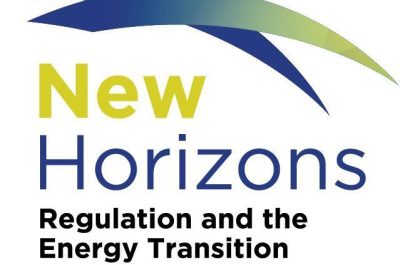200% renewable Tasmania – how will it work?
The Tasmanian Government has announced a target of 200 per cent renewable generation by 2040.
Achieving this means increasing yearly generation by 10,500 GWh. [i]
It’s ambitious but possible given Tasmania’s abundant water and wind resources.
From a network perspective, high renewables usually present a challenge to the grid given the generation sources are predominantly intermittent wind and solar.
However, for Tasmania, it means accessing more hydro-electric power – renewable generation with the virtue of being dispatchable.
Two hundred per cent sounds cool but having 100 per cent more energy than you need would be a waste of money unless it can be exported.
Enter Marinus Link, the power cable that will provide a second undersea transmission connection to the island state and deliver that excess clean energy to the National Electricity Market (NEM).
How do Tassie renewables help other renewables?
Compared with solar and wind, hydro can provide on-call support for stability as well as meeting demand.
This is because hydro can be used to generate and store energy.
Hydro generators use the potential energy stored in reservoirs at higher altitude. When water is released through a series of pipes, it runs downhill and through turbines to generate electricity.
The process can also be done in reverse where water from lower altitude reservoirs is pumped uphill for storage, using excess renewable energy. This water can then be later released when needed to generate electricity.
Coupled with wind and solar, hydro can soak up and store energy on sunny, windy days.
Tassie’s Battery of the Nation (more on that below) and Snowy 2.0 in NSW are the two major Australian hydro projects on the cards.
The limiting factor to Tasmania’s ambitions is the capacity of Basslink.
Basslink is a 290 km, 500 MW, DC undersea transmission cable that runs from Loy Yang in Gippsland, Victoria, across Bass Strait to Bell Bay in Northern Tasmania[ii]. It is currently the only interconnector between Tasmania and the mainland.
If Tassie is to become 200 per cent renewable, it’s going to need a bigger cable.
What is Marinus?
Project Marinus plans to quadruple the interconnection capacity between Tassie and Victoria.
The project proposes to build two 750 MW, DC transmission links, with a total capacity of 1500 MW. The cable will connect Burnie in Tassie with Hazelwood in Vic.[iii]
The economic assessment of Marinus was released in December 2019 with modelling by TasNetworks showing the benefits will outweigh the costs.[iv]
The Commonwealth Government has provided $56 million to advance the design and approvals phase, while the Australian Renewable Energy Agency (ARENA) provided $10 million. These contributions have been matched by the Tasmanian Government.[v]
In addition, the Prime Minister announced the project would be considered a priority. This would mean Commonwealth assessment and approval times would be reduced from an average of 3.5 years to 21 months.[vi]
Battery of the Nation
To achieve the target, Tasmania will need to significantly expand its generating capacity.
Battery of the Nation is the catchy name for the plan to do just that.
A particular focus will be pumped hydro projects. Tassie will use cheap electricity during times of low demand and high supply to pump water uphill and fill dams. When demand rises, this water can be released, and electricity generated.
The Tasmanian Government expects up to 400 MW of latent capacity could also be accessed from this project.[vii]
Hydrogen
Tassie is also looking to hydrogen production to supply domestically and for export.
The Tasmanian Government has articulated its vision to capitalise on low-cost renewable energy sources to become a world leader in hydrogen production in the Tasmanian Renewable Hydrogen Action Plan. The Government has budgeted $50 million for renewable hydrogen support measures.[viii]
Hydrogen produced from excess renewable power presents a huge opportunity as a storage source of clean energy. This could be converted back to electricity, blended into the existing gas network or exported for use overseas.
The future
Our future energy grid will need an array of technologies and a lot of forward-thinking, like that of Tasmania.
To address the challenge of meeting future demand with low or zero-emission energy, Australia will need a shopping basket of options – additional interconnection, hydrogen, battery storage and new generation.
As Australia’s energy system transforms to support a decarbonising economy, investments will need to be made in projects that provide flexibility to ensure power reliability and grid security, while maximising benefits for customers.
References
[i] https://www.stategrowth.tas.gov.au/__data/assets/pdf_file/0011/241112/TREAP.PDF
[ii] http://www.basslink.com.au/basslink-interconnector/#:~:text=Basslink%20is%20a%20400kV%20DC,from%20Tasmania%20for%20limited%20periods.
[iii] https://www.marinuslink.com.au/wp-content/uploads/2020/02/Marinus-Link-Fact-Sheet-Feb-2020.pdf
[iv] https://www.marinuslink.com.au/2019/12/tasnetwork-shares-bca-and-padr/
[v] https://www.stategrowth.tas.gov.au/__data/assets/pdf_file/0011/241112/TREAP.PDF
[vi] https://www.pm.gov.au/media/address-%E2%80%93-ceda%E2%80%99s-state-nation-conference
[vii] https://www.stategrowth.tas.gov.au/__data/assets/pdf_file/0011/241112/TREAP.PDF
[viii] https://www.stategrowth.tas.gov.au/__data/assets/pdf_file/0007/223927/Tasmanian_Renewable_Hydrogen_Action_Plan_web_27_March_2020.pdf
